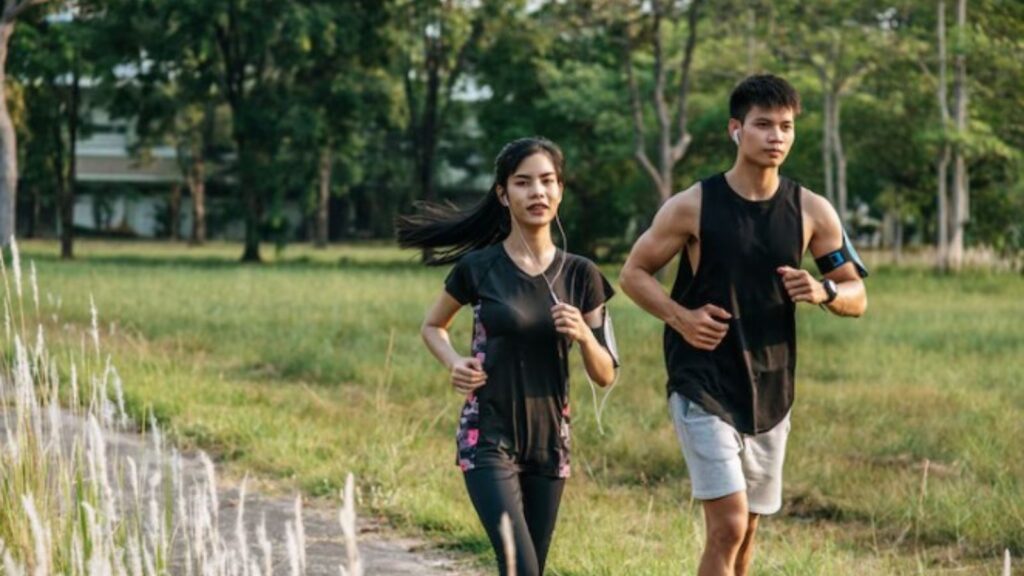At dawn joggers circle the Parliament complex. By noon students lap village ponds, and after dusk parents loop school tracks. Running is growing in cities for being cheap, flexible, and welcoming to all fitness levels.
The Spark Behind the Surge
Victory Day fun runs once drew modest crowds, but social media turned finish-line selfies into recruitment posters. Registration for Dhaka’s winter half marathon fills in hours, and hillside races through Sylhet tea gardens sell out before posters reach café windows. Word of mouth travels fast when finish times post instantly online.
Easy Entry Beats Expensive Gear
A basic pair of trainers and any road outmatch the cost of bats, balls, or pitch rentals. Women’s running circles plan daylight routes with volunteer cyclists riding alongside for safety. Some schools encourage running by marking basic circuits for students. Evening walkers in Narayanganj track distance around municipal parks lit by new LED lamps.
Why running outpaces other sports:
- Gear costs less than a single monthly phone bill
- Flexible timing fits factory shifts and exam seasons
- Solo friendly yet rich in optional group support
Health campaigns and community events often promote running as an accessible form of exercise.
Tech Keeps Runners Honest
GPS apps announce pace in Bangla each kilometre and draw colourful maps ready for sharing. Some runners check live scores on onexbet after logging their splits, using the same phone for both tracking and following football fixtures.
Clubs Turn Strangers into Training Partners
Dhaka Runners, Chattogram Pace Makers, and dozens of Facebook groups post weekly interval plans. Leaders cap distance jumps to protect shins, organise shoe-swap meets so newcomers avoid blister-inducing knockoffs, and arrange long runs that finish at popular local markets where runners can refuel with fresh fruit.
Races Crowd the Calendar
Marathon season has expanded into women-only five-kilometre events, night relays on river embankments, and trail ascents through tea estates. Sponsors fund water tables, and folk drummers set tempo near starting arches. Vendors sell coconut water for electrolytes and tailors print commemorative shirts overnight.
Checklist for a first race:
- Break in shoes with three practice jogs
- Pin bib the night before to avoid dawn stress
- Pack reflective bands for early starts
- Arrange bus or ride share to the start gate well before sunrise
Following these steps lowers anxiety and keeps finish-line photos bright.
Economic Ripple Effects
Retailers in cities like Khulna report growing interest in neutral-cushioning running shoes. Street hawkers near Ramna Park expand menus to include banana bundles aimed at post-run recovery. Local printers earn steady income from personalized finisher medals commissioned by small charity races.
Health Evidence Piles Up
Doctors and trainers in Bangladesh note improved heart health among regular runners compared to sedentary individuals. Community clinics see steadier blood sugar levels when patients add brisk jogs three times each week. Running clubs host quarterly blood-pressure screenings that catch silent hypertension early. Physiotherapists note fewer knee issues among members who follow structured mileage plans instead of sporadic sprints.
Gender and Inclusion Progress
Women now make up a visible share of start lines in cities and towns. Events like the Pink Run in Chattogram reserve female-only lanes and provide child-care tents near the course. Inclusive events have featured wheelchair participants, though dedicated infrastructure remains limited in many regions.
Challenges and Community Fixes
Dust thickens during the dry season, and reckless traffic makes city running unpredictable. Runners shift to dawn loops or use university tracks after dark. In Dhaka and Chattogram, zebra crossings have been added near parks, and trucks are restricted during weekend race events. Cotton masks help filter air along dusty corridors, especially near construction sites. In flood-prone chars, raised earthen trails built for drainage serve as running paths once the water recedes.
Future Trails and Tools
Rail authorities study turning disused branch lines into shaded greenways. Retailers and clubs sometimes lend trial shoes during major events in parks like Ramna to help runners find the right fit. Apps provide offline maps with Bengali voice and air quality tips for cleaner, low-signal routes.
Conclusion
Running is growing in Bangladesh for being simple, cheap, and flexible. Smartphones, volunteer clubs, and modest civic tweaks widen its reach each season. Whether chasing a marathon personal best or jogging two loops after dinner, every step echoes the same promise: the road stays open, the community is growing, and anyone can join.

